Rocca Pendice and the Cascatella
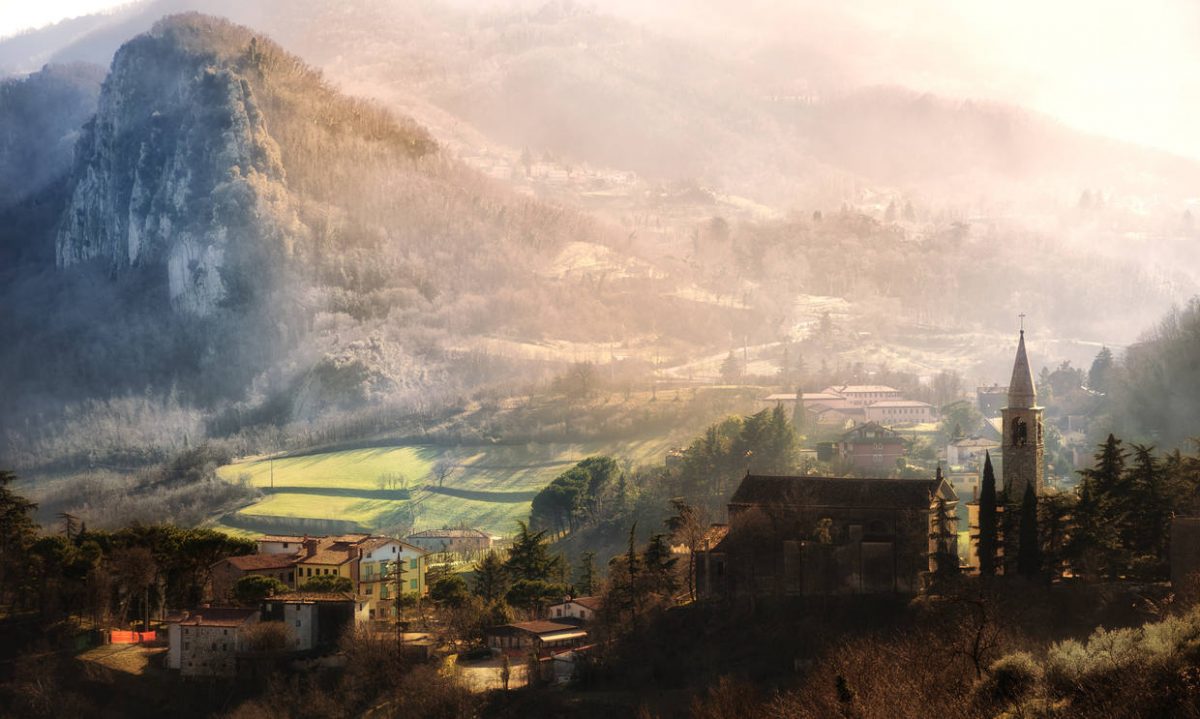
Rocca Pendice – Euganean hills
Mount Pendice is the hill that overlooks our farmhouse. An easily accessible path allows you to reach the highlights of the hill: the rock climbing gym, where you can often find climbers in training, and the ruins of Rocca Pendice castle. The castle is linked to the legend of Speronella, a beautiful and young girl kidnapped by Count Pagano, a vicar of Frederick Barbarossa. Both these places offer picturesque views of the natural landscape.
Not to be overlooked is the proximity to the Cascatella, or “Cascata Schivanoia,” a fascinating and unique spot in the Euganean region. It can be reached via a short dirt path about ten minutes from our farm, surrounded by centuries-old chestnut trees.
Monte della Madonna
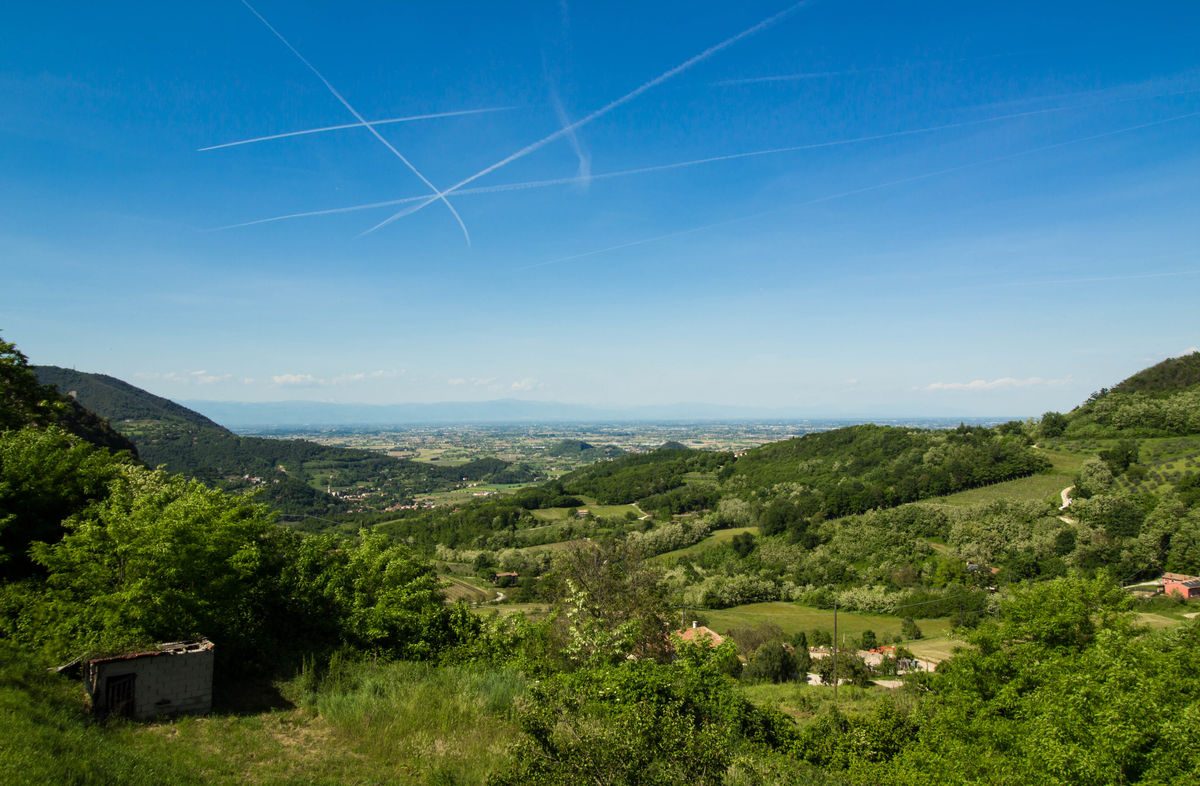
Land – Euganean hills
With its 523 meters in height, it represents the second most imposing relief of the Euganeans. It overlooks the village of Teolo, and it is from the center of the village that you can take the path that will gradually take you to the top. Along the way, in addition to numerous panoramic points, the presence of the church of St. Anthony the Great, a small chapel immersed in the greenery of nature, is of particular interest.
Continuing, you can stop at the “Parco delle Fiorine,” one of the most popular destinations for outings from Padua, where in recent years, an adventure park for the more daring has also been created. At the extreme summit of the hill, there is a small sanctuary dedicated to the Blessed Virgin Assumption, whose presence has determined the name of the hill itself.
Monte Venda
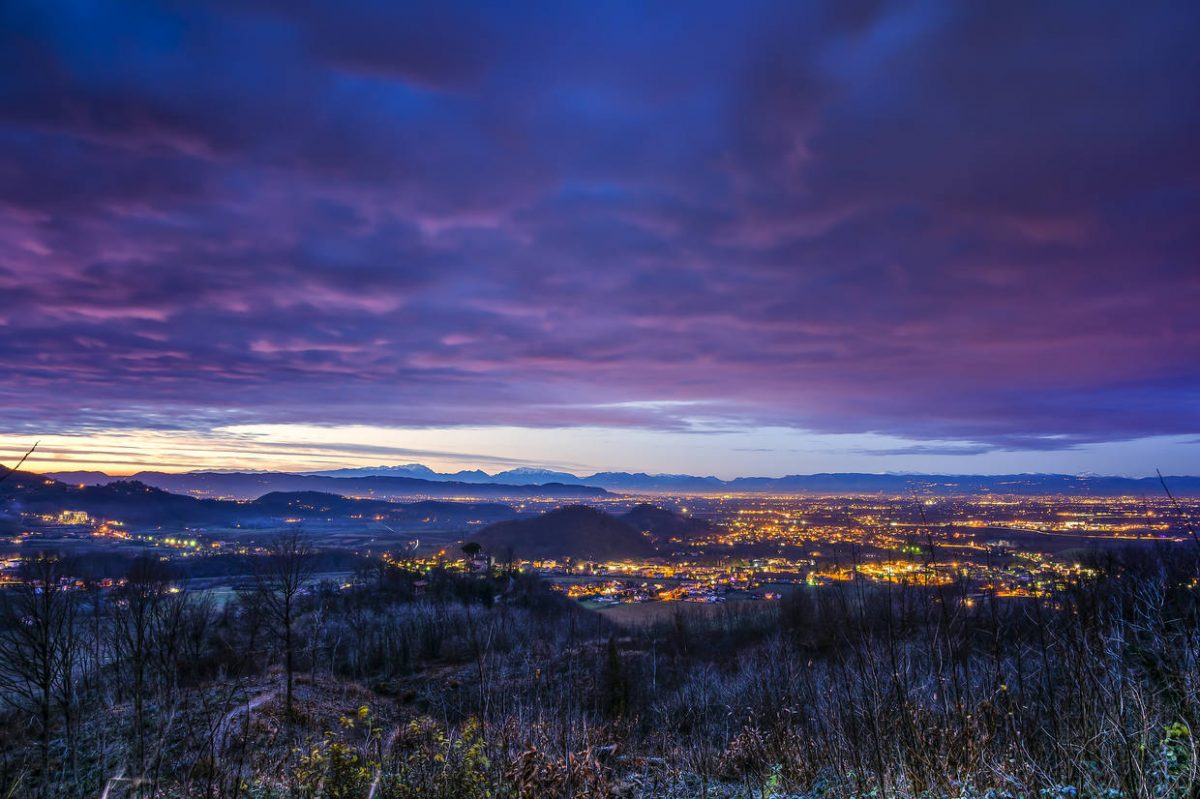
Evening panorama – Colli Euganei
It represents the highest hill among all the Euganeans. By reaching the base of the trail by car, you can continue on foot to reach the summit, from which you can admire a breathtaking panorama that, on clearer days, extends to the Venice lagoon. Additionally, the mountain hosts the recently restored ruins of an ancient Olivetan monastery, built around 1100, making the mountain a peaceful, scenic, and quiet place.
Arquà Petrarca
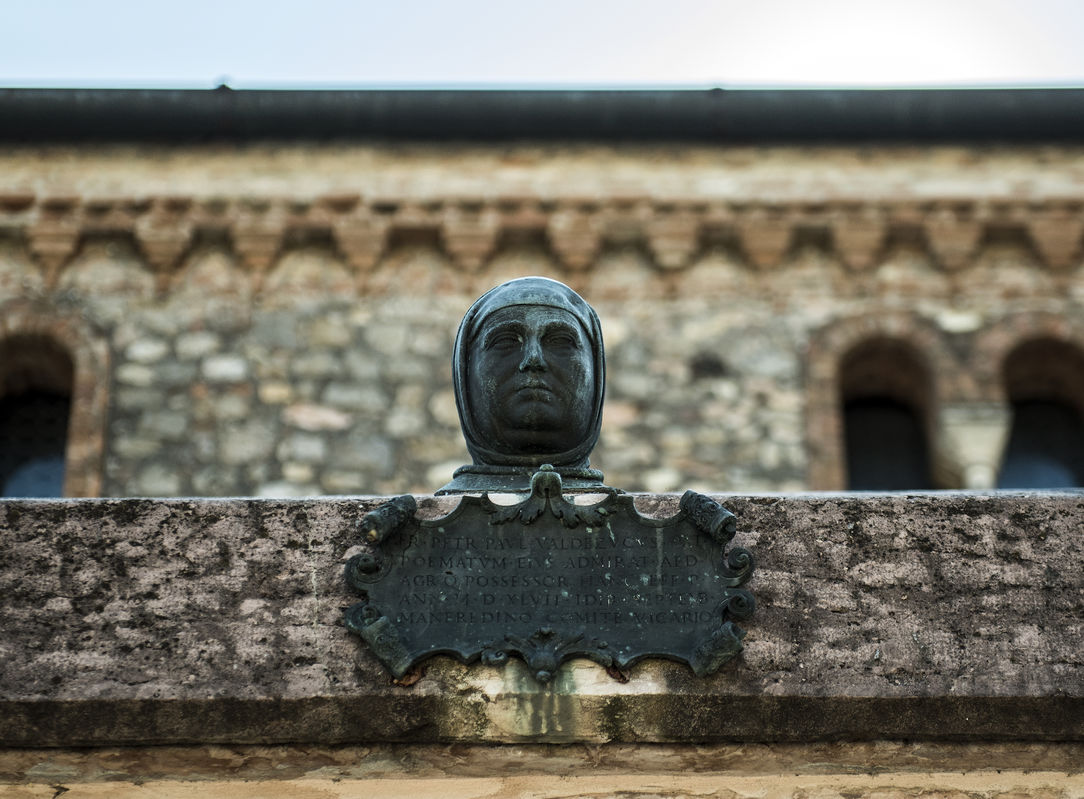
Petrarca’s tomb – Arquà Petrarca
The second most beautiful village in Italy. It can be considered a true medieval village, as over the centuries, its structure and architecture have remained unchanged. It houses the house of Petrarch, where the famous poet died in 1374, as well as his tomb in the town square.
The village is also famous for the typical fruit cultivated here: the jujube.
Monselice
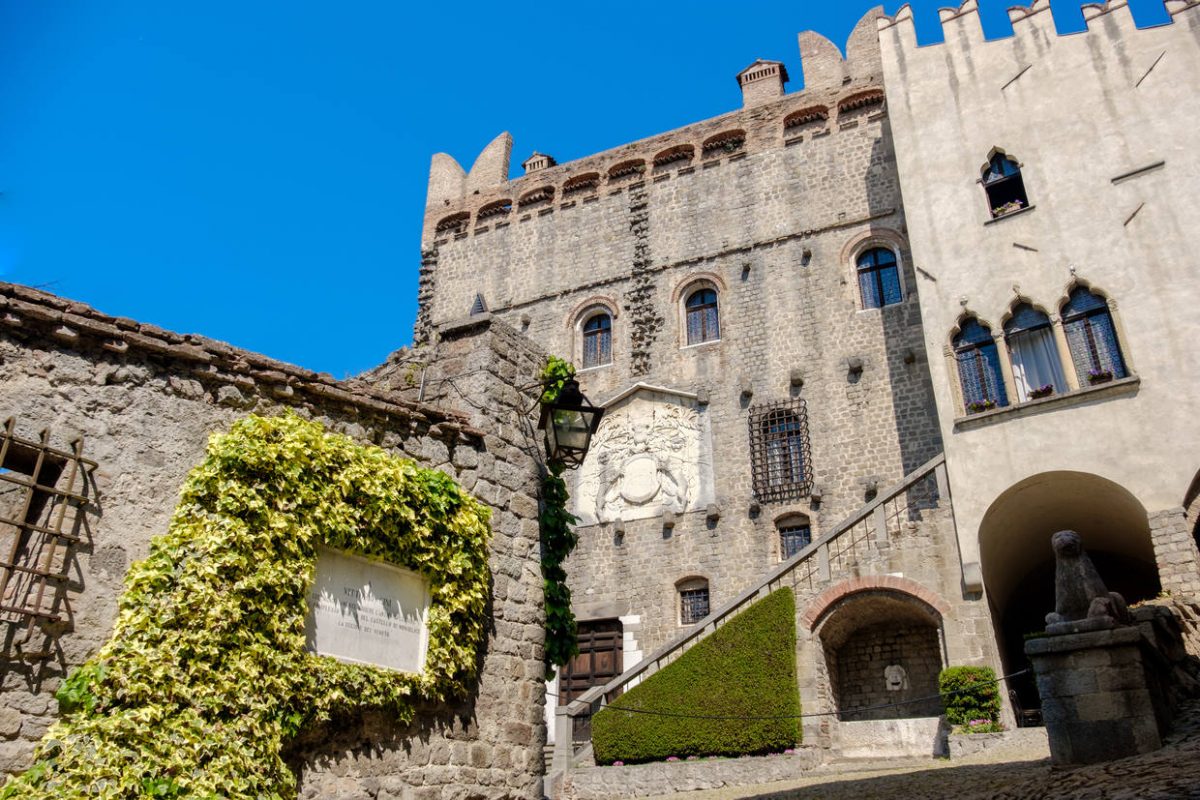
Monselice – The Cini Castle
An ancient town that still retains traces of its past splendor. From the pedestrian street, now surrounded by small shops, you can stop in the city square characterized by the thirteenth-century “Torre dell’Orologio,” and then take a slightly uphill path that leads to visit the main attractions of the city. You will first encounter the Cini Castle, which houses a large collection of weapons and armor, the sanctuary of the Sette Chiesette, and, finally, the Rocca, a medieval ruin that gives its name to the homonymous hill.
Every year, in September, Monselice re-enacts the passage of Emperor Frederick II of Swabia through numerous events and shows, such as the Giostra della Rocca, markets, and medieval processions.
Galzignano Terme and Valsanzibio
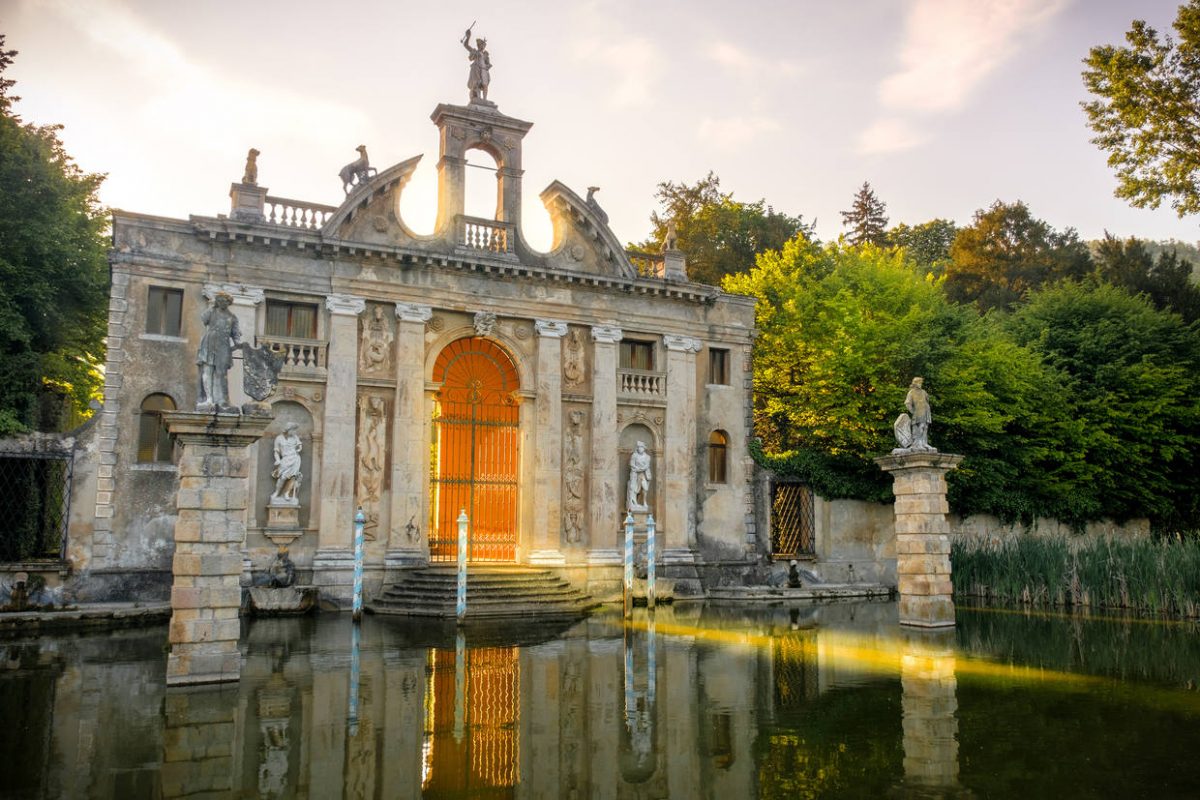
Valsanzibio – Villa Barbarigo
In the locality of Valsanzibio, you can visit the gardens of Villa Barbarigo. The monumental complex, built in the second half of the 17th century, is a magnificent example of a symbolic garden. It features a large labyrinth, a cave, an island, and many water features. The ancient main entrance, Diana’s Portal, is visible from the road and gives the place an imposing aura.
Battaglia Terme
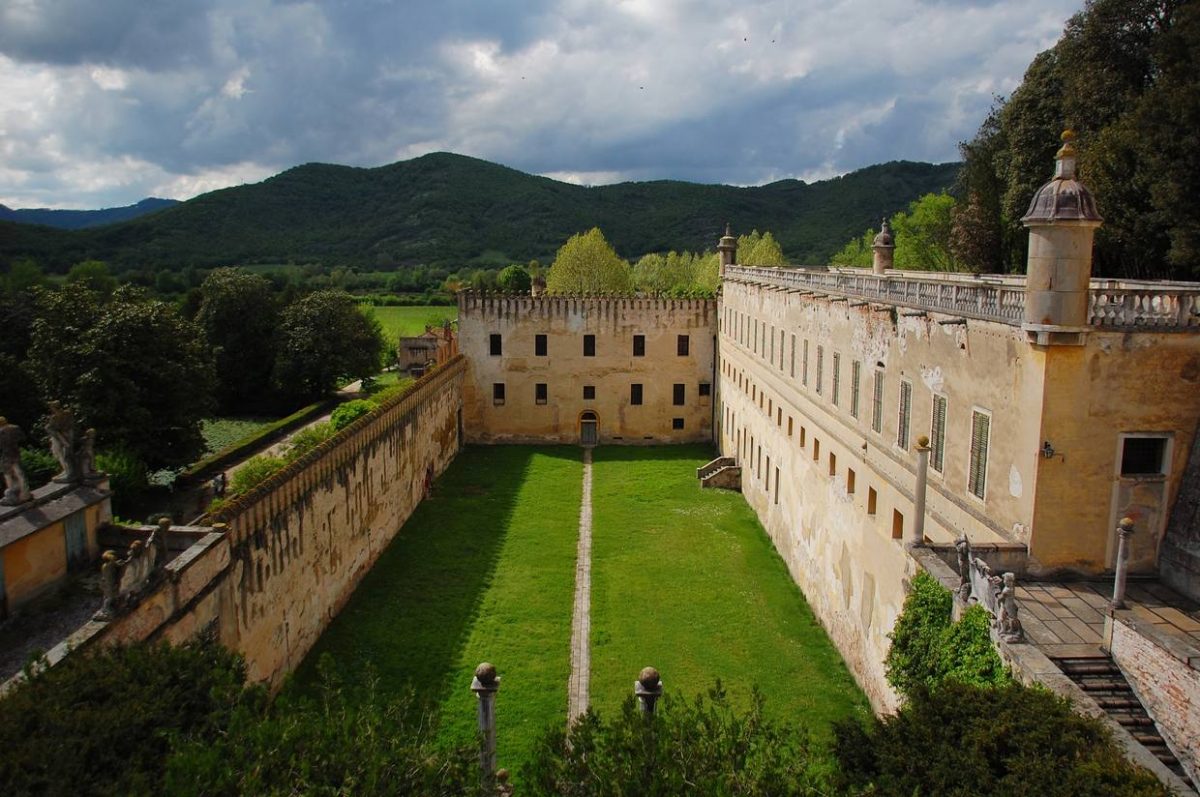
Battaglia Terme – The Catajo’s castle
Characterized by the presence of the homonymous canal, Battaglia is a small municipality at the foot of the Euganeans. The most imposing building that characterizes it is the Catajo Castle. Built in the second half of the 16th century, it represents one of the most majestic private residences in Veneto. Originally owned by a family of mercenaries, it later belonged to the Estensi and the Habsburgs. Inside is one of the most characteristic pictorial cycles of the Venetian Renaissance, by Giovanni Battista Zelotti.
In Battaglia, once an important river and commercial hub, you can also find the Museum of River Navigation, a unique museum born from the initiative of former boatmen to preserve.
Este
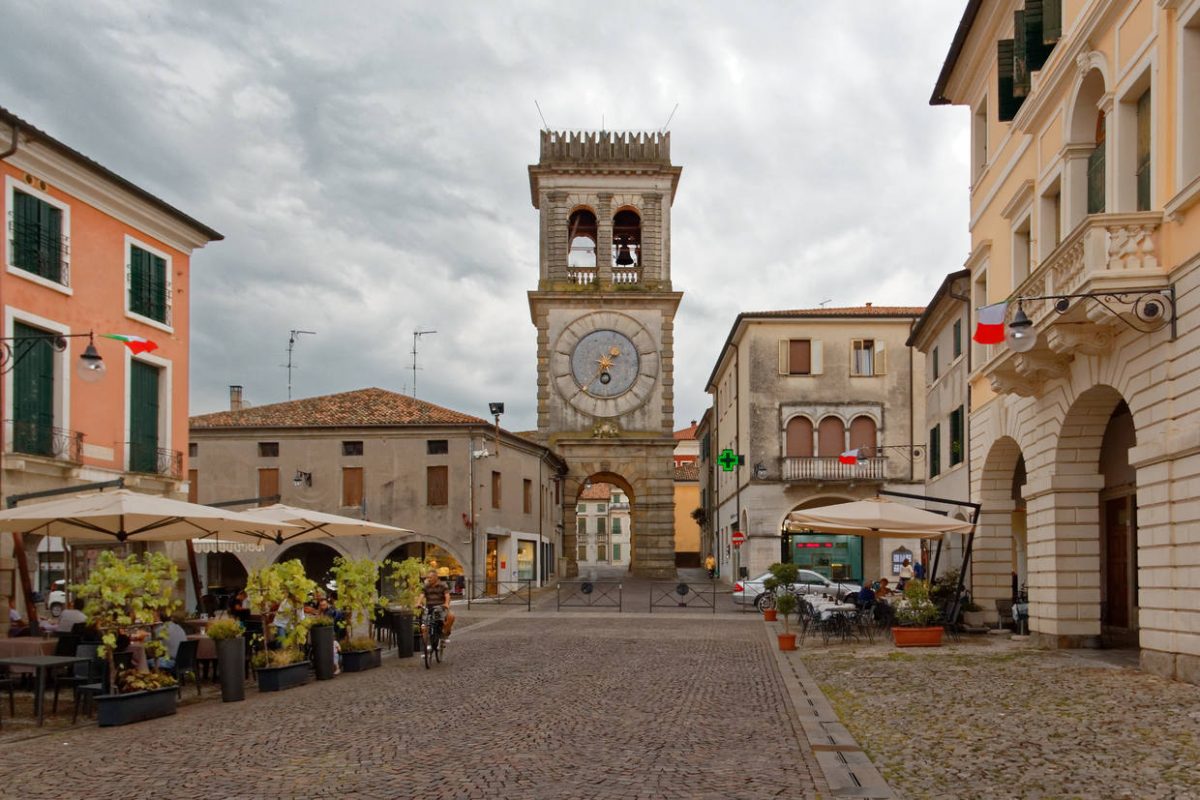
Este – la torre dell’orologio
It represents the oldest and main settlement of the ancient “Veneti” population. The town also gave its name to the Este family, who in the 11th century settled here before moving to the city of Ferrara. Traces of the ancient walls and the castle still remain in the town today.
The town is home to the National Atestino Museum, which illustrates the history of the ancient populations of the Venetian territories in pre-Roman times. With its archaeological collections, it represents one of the most important regional and national archaeological sites.
Torreglia and Luvigliano
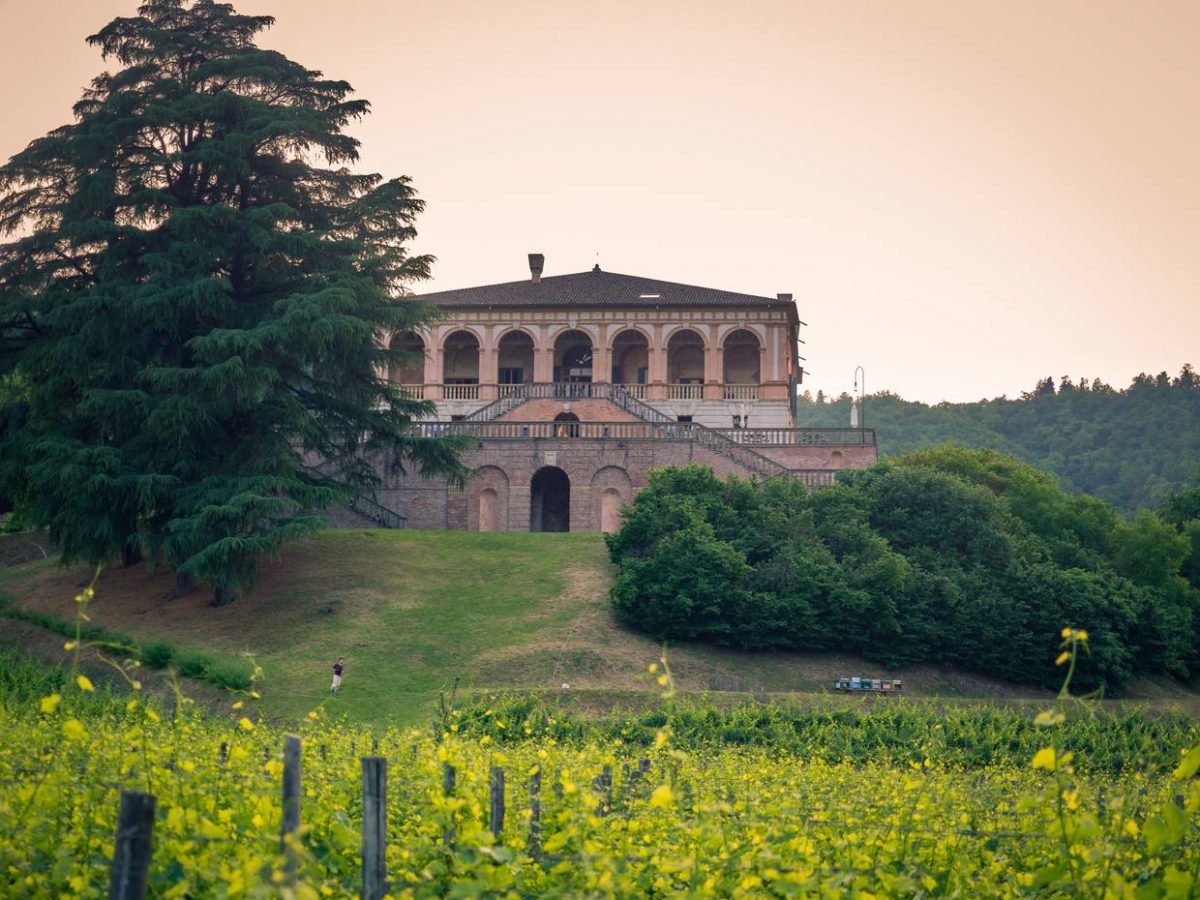
Torreglia – Villa dei Vescovi
In the locality of Luvigliano di Torreglia, on a gentle slope, you can admire and visit Villa Vescovi. Built in the first half of the 16th century, it represents a prelude to the Palladian age. It was owned by the bishops of Padua until 1962 when it was purchased by the Olcese family, which donated it to FAI in 2005. Through restoration, it was possible to recover the cycle of frescoes, and since 2011, it has been possible to visit the villa and its grounds.
Teolo and Praglia
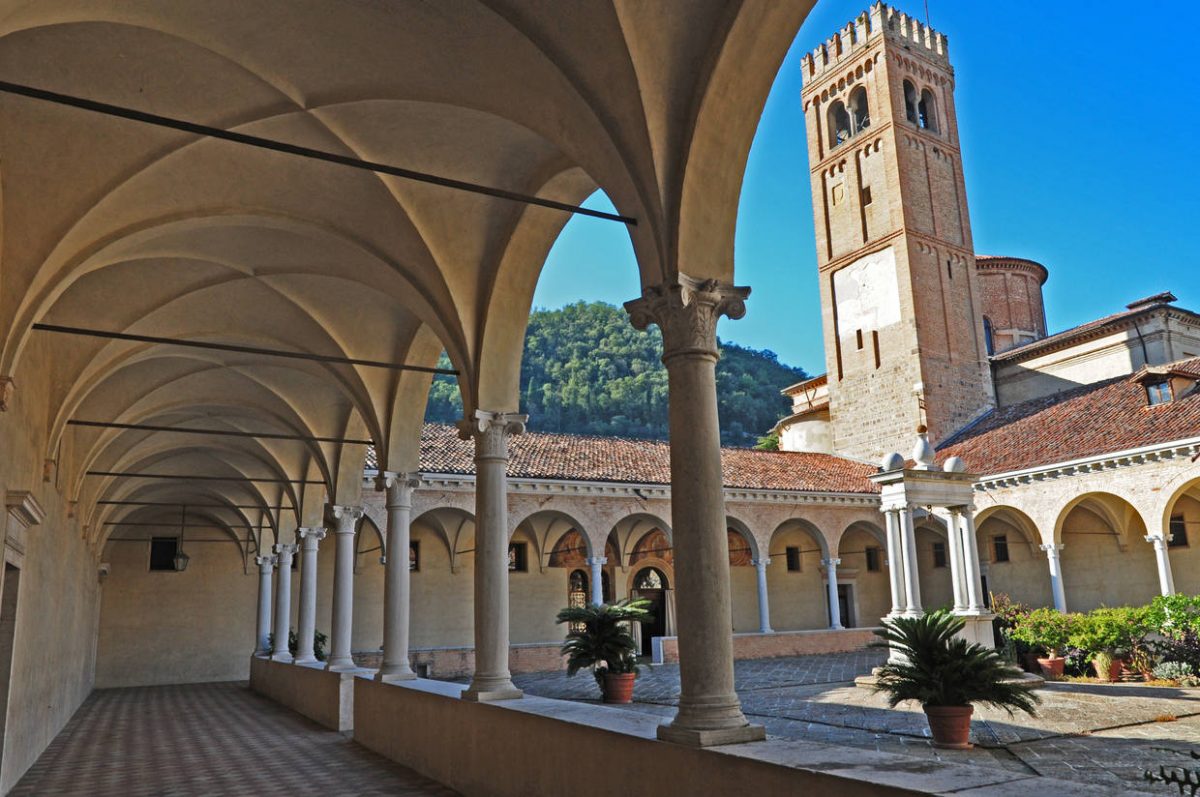
Abbazia di Praglia
Praglia, a fraction of Teolo, is known mainly for the presence of its Abbey. Built between the late 11th and early 12th centuries, the abbey is a large complex that includes a church, elevated to the rank of a minor basilica, and its monastery. Inside the monastery, Benedictine monks preserve original manuscripts in the library, a national monument, and are active in the restoration workshop for ancient books. Furthermore, the monks of the abbey are still engaged in farming and the cultivation of medicinal plants: what is produced can be purchased at their small shop inside the monastery.
Abano and Montegrotto

Montegrotto ed Abano Terme – centri termali
Abano and Montegrotto Terme represent the largest thermal basin in Europe. Their thermal waters allow guests to relax in the spas of the hotels, and the famous thermal mud allows the treatment of various pathologies.
The hotels also welcome external guests, and they are very easy to reach since the thermal area of Abano and Montegrotto is 10 kilometers from Teolo.
Venetian Cities
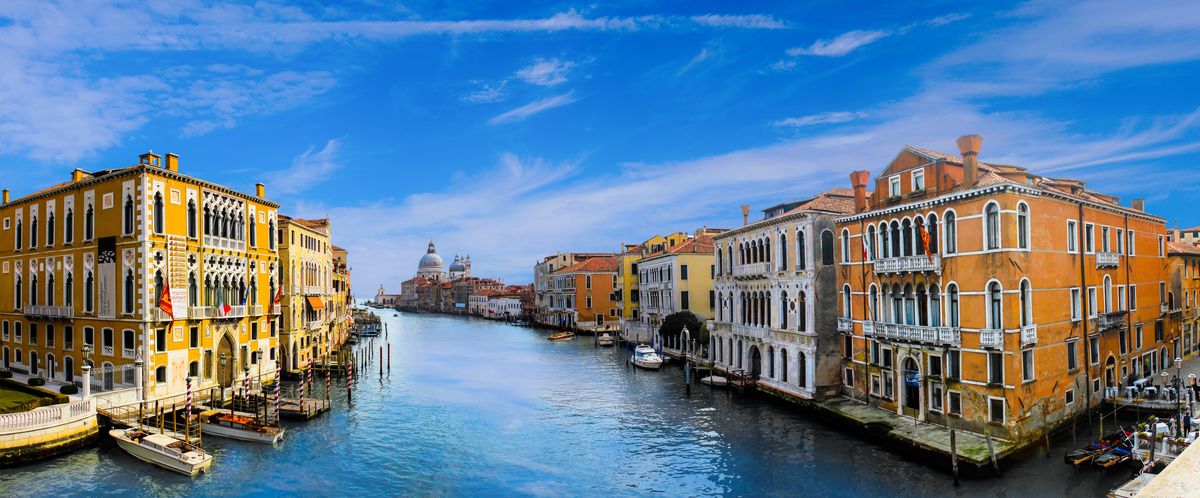
Venezia
With its strategic location, Teolo offers the possibility to easily reach the main Venetian cities. We are 30 minutes from Padua and Vicenza and an hour from Venice, which can be easily reached by train from Montegrotto Terme (15 minutes by car from the farmhouse to the station). Verona is approximately 1 hour away from us and can be easily reached by car or train.
By car, you can reach the Palladian villas of Vicenza and the Renaissance villas of the Brenta, as well as various towns in the surrounding area, such as Cittadella, Castelfranco, Bassano del Grappa, Marostica, or Montagnana.